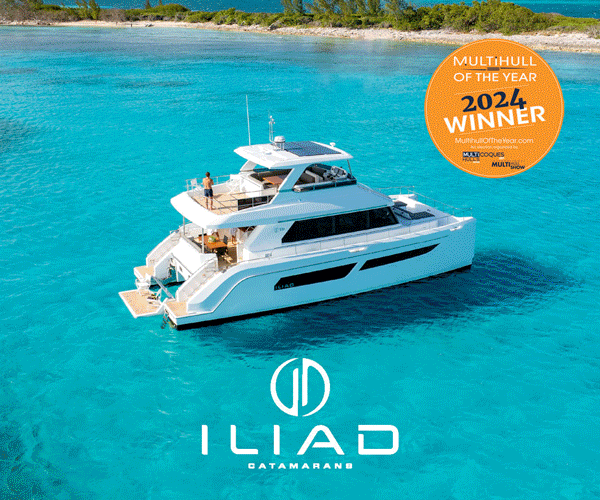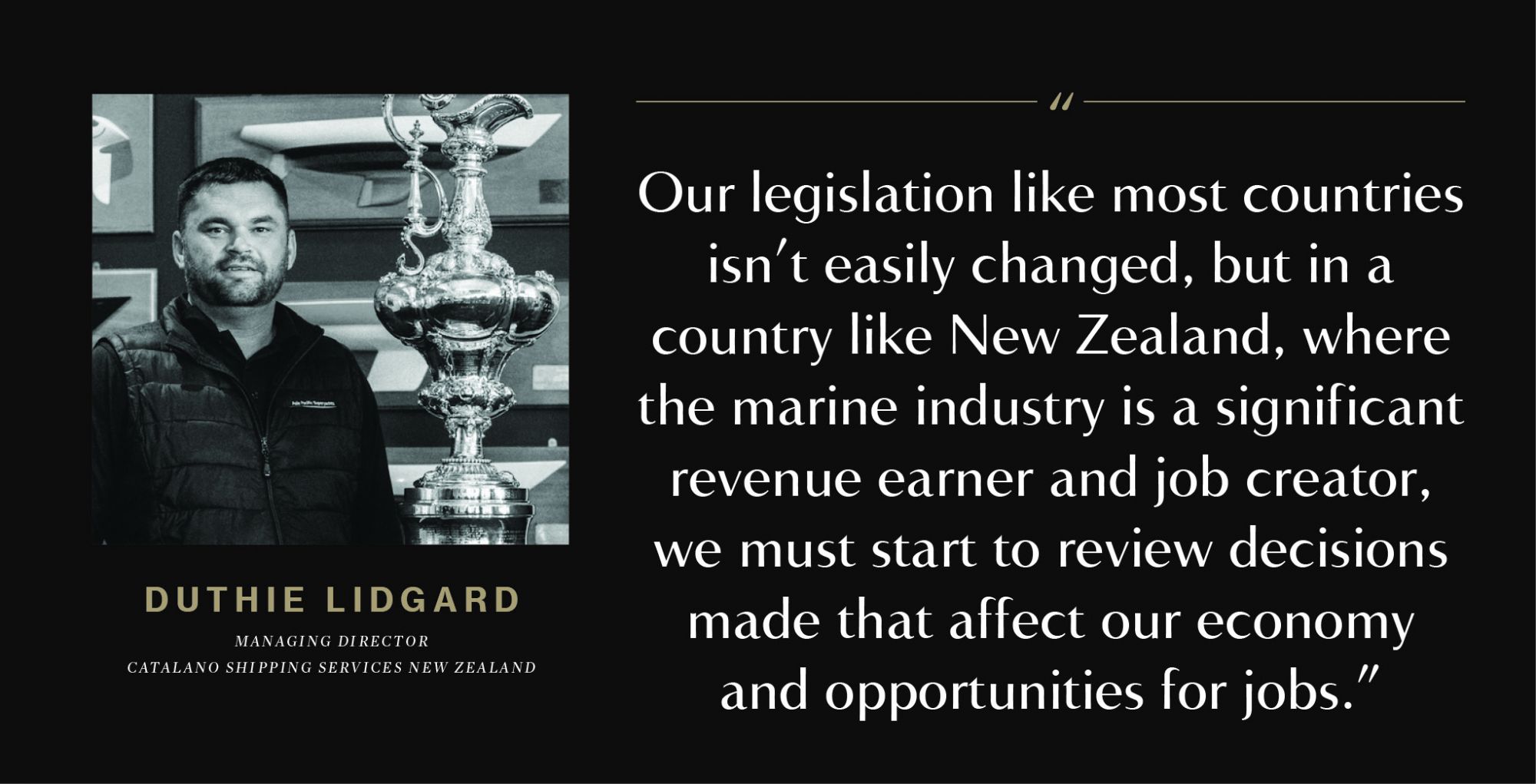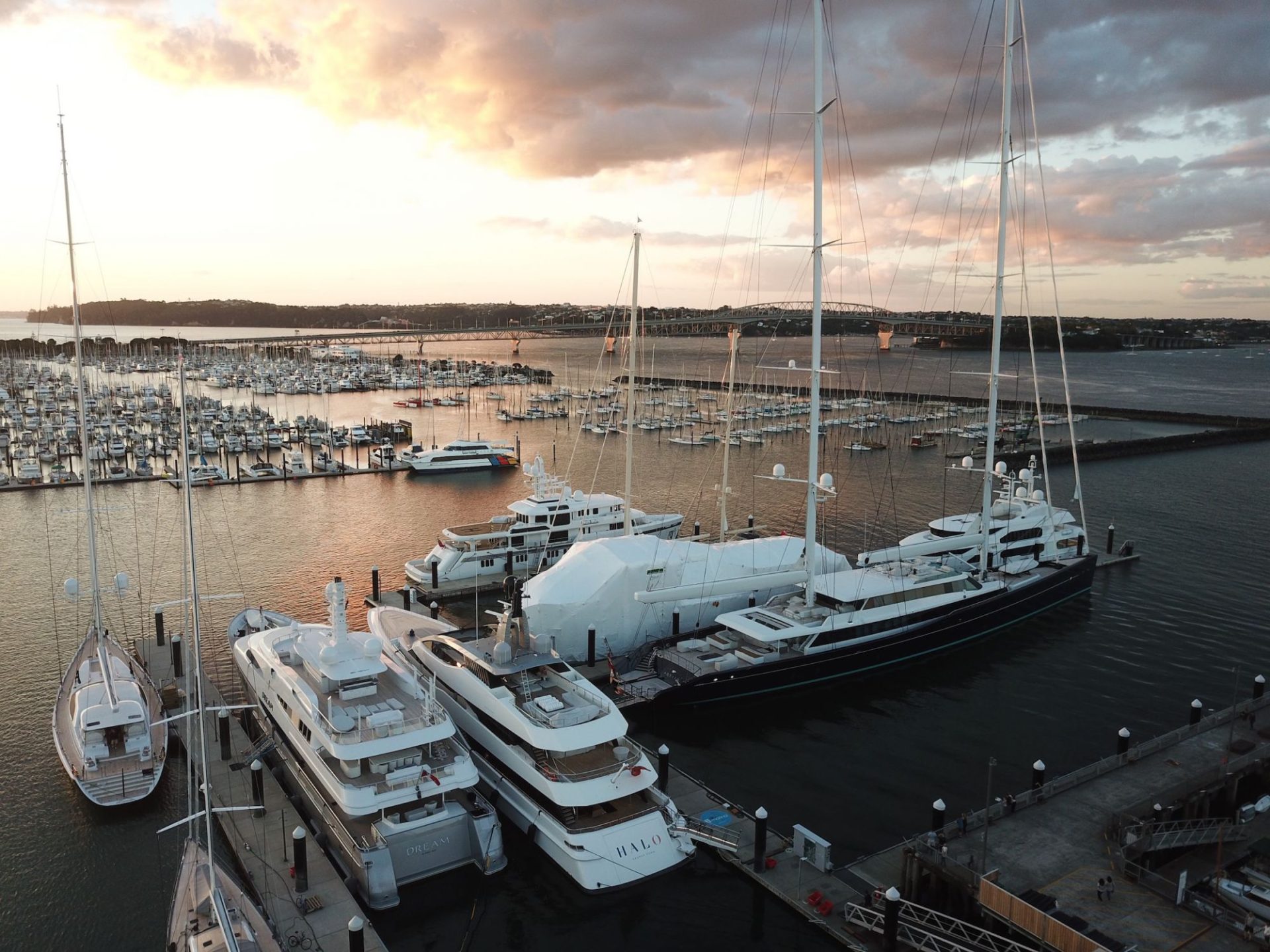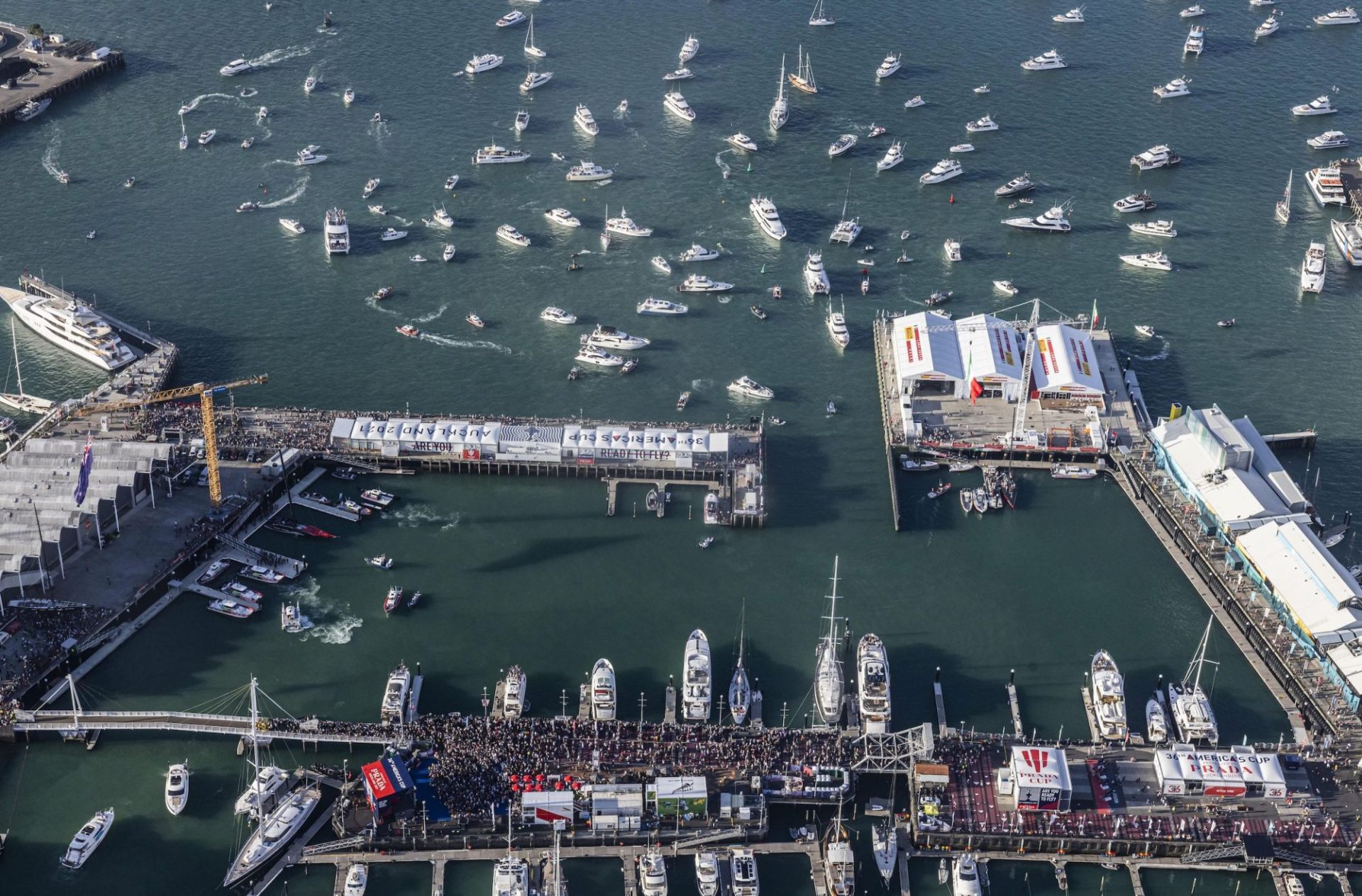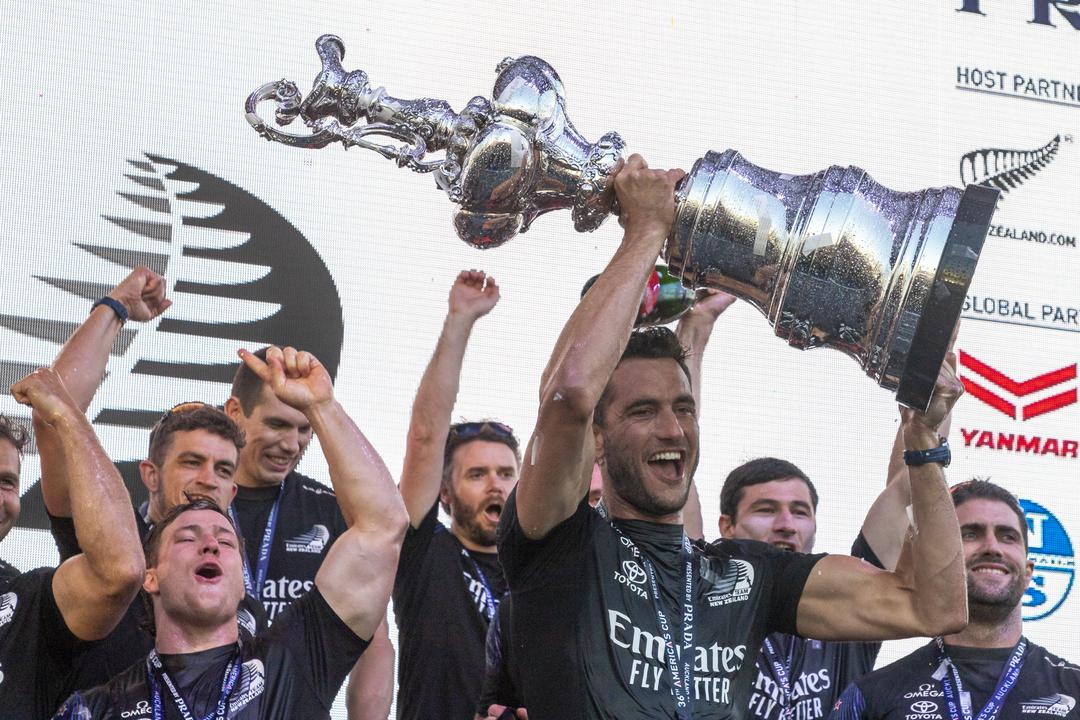Number 8 wires
Like many industries, COVID-19 has directly impacted New Zealand’s marine industry. Now, with reduced restrictions and the end of the 36th America’s Cup, questions remain over whether the industry is thriving, stabilising or needs more support
Written by Maryanne Edwards
26 March 2021
As we’ve seen across the world, the interaction of COVID-19 and the marine industry has been complex. But somewhat absent from the conversation is how this new normal has impacted the industries in the South Pacific, specifically New Zealand. A country that, following the 36th America’s Cup, has now returned to the global marine lens.
While Oceania has largely remained relatively untouched from COVID-19 compared to Europe or the US, the assumption is that our industries are also unaffected. But, for what is a globally connected industry, particularly within the superyacht sector, such a notion feels myopic.
Duthie Lidgard is a long-term player within the New Zealand superyacht industry, being both a fifth-generation member of a boatbuilding family as well as the Managing Director for one of New Zealand’s leading superyacht agents, Catalano Shipping Services NZ.
As an expert on the country’s marine and superyacht industries, Global Marine Business Advisors’ Maryanne Edwards sat down with Lidgard to discuss the impact of COVID-19 and the industry’s response to it, as well as the influence of the America’s Cup, and what the industry needs moving forward.
Maryanne Edwards: What are the key industry segments in New Zealand at the moment, which ones are doing well and which ones are struggling?
Duthie Lidgard: This is an interesting question that can be approached from many angles but across the board, the marine segment is active in New Zealand. We’ve seen a huge influx on localised spending due to less international travel. Local yachties are investing in new upgrades – boats, outboards, jet skis, sails, the list goes on. But for the superyachts, it relies heavily on tourism and owners and their guests being able to join the vessels. Regardless of refit plans, the tourism side of the equation is always a key factor when looking at coming to the South Pacific.
Given how tourism attraction is such a key focus, as a superyacht agent we are focusing on having a strong tourism team in the background. Even though borders have been closed, we’ve been moving forward, especially with the flair we provide with our Māori culture.
What are the crucial issues most businesses in New Zealand are addressing to ensure both survival and success?
Diversifying and adapting to the environment is the crucial area for survival. We have gone from face-to-face dealings to moving to online servicing and remote working overnight. All these changes instantly made it a challenge to ensure you remain up to date with what is readily available.
To ensure survival and success, in regards to the way we are operating, means changing our day-to-day operations to meet the current climate of the pandemic regulations and perceptions. It’s important to limit interactions to ensure you, your colleagues, your clients and family feel comfortable that your operation is taking every health precaution while still servicing their every need and request. This in turn creates trust.
Having clients that trust you at every turn is a huge success.
We have had one of our busiest winters at the agency leading up to the Prada Cup start last year. And I feel clients during the pandemic have turned to the businesses they have a relationship with – businesses that have trusted processes and deliver on their promise.
Have you noticed a notable change in supply chains for the New Zealand marine industry since COVID-19? Such as a move to source more locally, for example.
I personally haven’t seen any major changes. New Zealand suppliers had good stocks. We were in the peak of summer when the pandemic hit and during winter, we fully closed.
When restrictions were lifted, there were sufficient stocks on hand to keep forging forward. We know many distributors do need to now look at ordering nine months in advance as Europe manufacturing is affected, which does trickle down to New Zealand, but that affects everyone globally.
We still ship a few items in from Europe, the US or Asia, but this is merely due to being able to secure the larger products directly from the manufacturer overseas when there’s no support in New Zealand.
All the freight companies we have dealt with have been on point and there’s been very few delays across New Zealand since the pandemic. A good freight company can solve a lot of issues. We have always been told what flights are running and what airports are backlogged before all have been booked. We continue to work with contractors and suppliers to come up with a fast and efficient ideal local solution where possible. Good old, number 8 wire, Kiwi mentality.
There were reductions in superyachts coming into New Zealand compared to what was expected for the America’s Cup. Did this affect industry players? What role has the America’s Cup currently fulfilled for New Zealand businesses?
Charter Brokers have been busy – we have seen many requests for wealthy New Zealanders, who are unable to travel abroad, looking at chartering yachts. But also with the America’s Cup, this placed a great spotlight on Auckland and our Hauraki Gulf for anyone in New Zealand looking to charter a yacht.
Agents in general have been coping well. From our perspective, the season overall has been a standard summer season like any other with visiting yachts. What has changed is how they plan and spend their budgets, as owners can’t easily fly into New Zealand. This means the crew can’t rotate and many of them end up being part-time fill-ins. And given international owners can’t use their boats, the spend to prepare the yacht for the owner has reduced.
But the America’s Cup has been a saviour as I see it for New Zealand. Almost every yacht that entered New Zealand during this pandemic period was solely for the America’s Cup. However, almost all the yachts had been hopeful the border controls would change and the owners would be allowed to enter and cruise their yachts across our pristine coastline. Sadly, this was not always the case.
Are consumers starting to buy larger vessels? Or are they looking to spend more recreational time on a manageable scale with smaller, easier to manage vessels?
I do see throughout the industry that consumers are indeed upgrading across the board with larger and newer models. Since New Zealand has reached maximum capacity in our marinas, the upgrades are limited to what can fit into the current berthing available.
Recreational time on the water has been busy this summer. I haven’t seen so many recreational fishing boats out in the Hauraki Gulf for some time – it is great to see people getting out and enjoying time with family or colleagues.
What is the horizon looking like if borders remain closed? Where will business come from?
That’s an interesting question and one we ask ourselves every day.
It’s hard to secure international business with borders closed.
We have adjusted our business model to also service the local market and this is all about service, service, service. It’s exciting to hear this week that the borders may soon be opening between Australia and New Zealand – currently, it’s only open one way with people coming from Australia still having to quarantine. Hopefully, other South Pacific countries will follow suit.
Is the New Zealand government sympathetic to the plight of the superyacht industry and facilitating the entry of international vessels?
I truly believe in New Zealand. We have the world’s best customs and immigration teams doing whatever they can to make the border controls work for superyachts. They see every day how this industry provides a huge economic impact across a wider group of segments, not just in the marine sector.
The government itself also understands the superyacht industry, but they are wary about the public perception that billionaires are buying their way into New Zealand. This is the number-one issue. With the industry trying to ensure the public are well-informed of the economic value and jobs this industry creates for New Zealanders.
Everyone has their own views. We accept that.
But when you look at the fact that New Zealand’s borders are closed but the government is allowing The Wiggles to enter New Zealand for a three-week tour – compared to the economic value of a $5-million superyacht refit that will keep 1,000 New Zealanders employed for two months – the system seems flawed. The system should allow both as each in their own way benefit New Zealand.
Our legislation, like most countries, isn’t easily changed but in a country like New Zealand, where the marine industry is a significant revenue earner and job creator, we must start to review decisions made that affect our economy and opportunities for jobs.
An example of this issue is the regulations that have been widely reported regarding M/Y BOLD, which had recently received Ministry of Health approval and border approval to enter New Zealand for much-needed refit works. On the final application for crew visas, it was highlighted that seven of the crew could not be ruled essential for the vessel movements and were declined visas to arrive in New Zealand.
Unfortunately, due to New Zealand’s legislation on what makes a marine crew and what makes an essential worker – superyacht crews don’t fall under our legislation for easy approval. For a yacht willing to spend $750,000 over the space of three weeks in New Zealand to then have to cancel everything is heartbreaking for the industry. An industry that desperately needs yachts to enter for winter.
How important are trade associations in representing and supporting the industry in the current environment?
I’ve always looked at associations as the old boy’s network but now, more than ever, we need to be united and strong as an industry. A strong leading association for the marine industry is key to ensuring that every supplier, contractor and seller has a voice. It’s important for that voice to be heard near and far to ensure the public can understand what we’re facing. So, while this event has been significant, it could be seen as too little, too late. We needed to maximise our industry exposure while the world looked at New Zealand.
Unfortunately for many associations, they are unable to be targeted across one segment within an industry without upsetting another part of the industry.
We, as a business, are solely focused on superyachts and everything to do with superyachts so we forge on, ensuring our clients get the attention required in pursuit of 100-percent satisfaction.
In any trade association you want them to create a positive environment for your industry and we all need to see clearly the benefits provided.
When international boat shows resume, do you think they’ll be as important as before?
I’ve never been one to see a boat show as a critical tool for our business. Yes, they are important to show face, but having been locked into a country for 12 months and not seeing new clientele for some time, I now feel boat shows will be a significant step in reconnecting with the world. But with the reconnect, we will be implementing new future-proof tools to ensure we never lose connection again.



